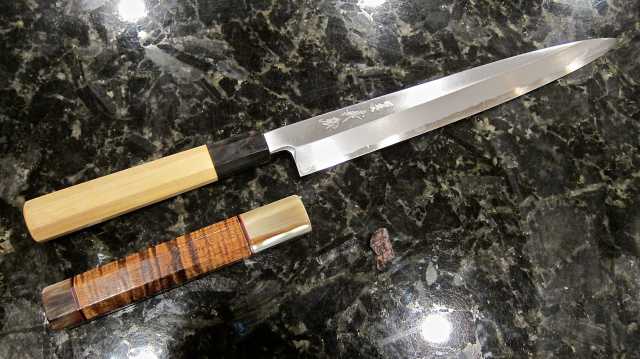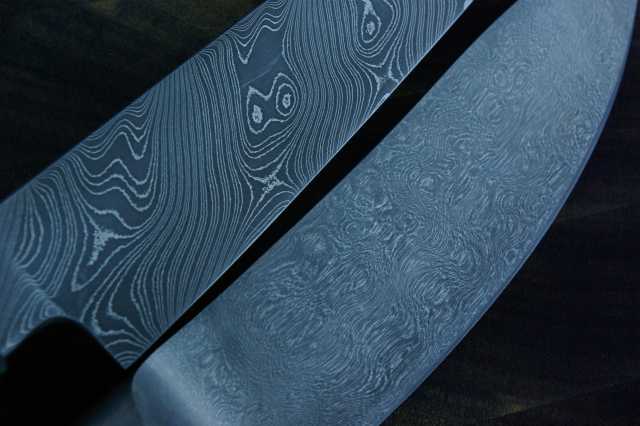Alan,
Chad Ward from eGullet did a tutorial and then later a book called, An Edge in the Kitchen. I have it and read it, and it is good BUT it is somewhat OBE at this point. KnifeForums, which he lauds blew up with commercial and personality disorders, plus the landscape of knife retail has changed amazingly since then. This is not to say that it isn’t a good resource – it is, and I just looked up a chapter the other week, but it does have some faults and is getting dated. Plus there are many other YouTube channels that describe half of his book much better than he can do in a book format. That’s just the way it is – eMedia.
Btw, one of the knives that Chad used in that book just popped up for sale a couple of weeks ago and sold for a crazy low price of $260-- and it was a Hattori just to make this thread more relevant. Not only was it in Chad’s book, it had a Fish handle. Fish was a forum member at KnifeForums who was one of the first custom/artisan handle makers, and he died a few years back. His knives are now much more collectible, but more than that, people trade his knives around to use and he is a legend. It is hard to describe it in any other way. I have a couple Fish-handled knives and may not ever let them go.
So with that said, I think that if you want a book I would go with Chad Ward’s: An Edge in the Kitchen. After that, there are three videos that are helpful for sharpening (1) Dave Martell from Japanese Knife Sharpening (2) Murray Carter from his site and (3) the one from Korin.
Dave is more technique driven as he is a professional sharpener. Murray Carter’s video is good – and long (he is a knife maker). He does give you that confidence to just go at sharpening without over thinking too much about it though, and that is good. And Korin has some technique stuff that is interesting. I found how they handle tip sharpening and single bevels better than others.
But again, JKI videos on YouTube are probably just as good these days, if not better (and free). There are also others too. Rick Theory is just one (of many) that I will link to here. He shows how to progress from stones, feel a burr, and deburr (with rock-hard felt and stropping). It might not be the best example of sharpening a typical knife, but it is gives a good idea of ‘things to think about’. Raising a burr, and debarring are a good chunk of sharpening.
The second video is one from Saltydog. He is also sort of a legend in the knife community. His videos are pure knife porn along with technique (cutting usually). Both of the chefs linked below are pro chefs and love knives 
Anyhow, these are just a couple examples. I learn most from the forums and videos.
k.



